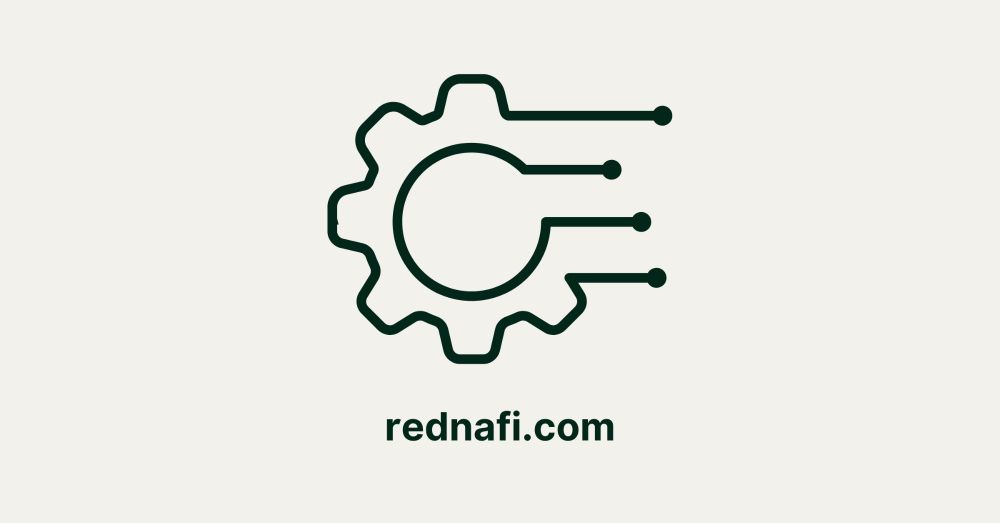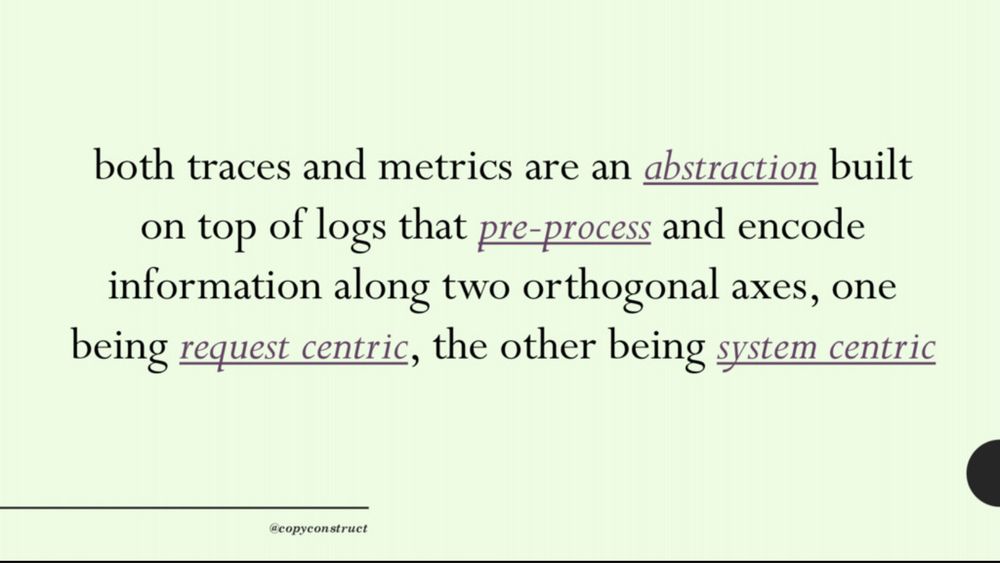Yeah, you still need pointer fields to distinguish between a missing value and a value explicitly set to the zero value.
05.08.2025 21:18 — 👍 0 🔁 0 💬 0 📌 0
TLDR;
Start with PG. Move to Aurora later on if you need to. Use your DB as a dumb storage backend. The fancy query patterns where the optimizer need to do a ton of work doesn't scale.
active-active multi region dbs should be your last resort. They are hard to operate and build on (n/n)
05.08.2025 12:57 — 👍 0 🔁 0 💬 0 📌 0
Being aware of this full circle is better than blindly saying: "those column family dbs are terrible and you shoud always use PG"
There's a reason why people moved from monolith to SoA and it's just not FAANG trying to sell you something (6/n)
05.08.2025 12:57 — 👍 0 🔁 0 💬 1 📌 0
At certain scale no matter what you do, you'll need an active-active db where every cluster can accept mutation & not just one in a single region.
But active-active dbs are AP and not CP like postgres/aurora. So it's a different tradeoff. And boy is it hard to develop your app with these dbs (5/n)
05.08.2025 12:57 — 👍 0 🔁 0 💬 1 📌 0
The optimizer in your relational db is doing a ton of work and it doesn't scale smoothly when you have multi region dbs.
So all these talks about nosql dbs aren't just db vendors trying to sell you something. It's easy to say so when you haven't seen relational dbs croak & break under load (4/n)
05.08.2025 12:57 — 👍 1 🔁 0 💬 1 📌 0
But it's good to keep in mind that the underlying storage is still shared in Aurora and there's only so much you can do with it.
Also, failover time for aurora has been a deal breaker in some instances. But that's the price you pay for consistency (3/n)
05.08.2025 12:57 — 👍 0 🔁 0 💬 1 📌 0
This mostly doesn't matter for startups. However, PG evangelists tend to overestimate the load at which it fails. This is my third workplace where I'm seeing PG failing earlier than "expected".
Aurora is amazing & I regard the auora white paper in the same position as the dynamo paper (2/n)
05.08.2025 12:57 — 👍 0 🔁 0 💬 1 📌 0
Stay in the Postgres lane as long as you can. Then move to Aurora if you need HA.
The transition should be smooth as long as you don't use all the power of PG. Complex queries & fancy features don't scale. In fact, they fail spectacularly when the workloads ramps up (1/n)
05.08.2025 12:57 — 👍 2 🔁 0 💬 1 📌 0
At Wolt, we have a position called "Competence Lead," where the person acts as an internal DevRel.
They champion certain tech, share practices that work for us, work w/ recruiters, attend confs, etc.
This resulted in some public facing content. But yeah, SV companies lead the way in this scene.
04.08.2025 10:27 — 👍 3 🔁 0 💬 0 📌 0
Polishing internal knowledge to share it with a broader audience takes a ton of work.
Most companies don't make it a priority. The ones that do it exceptionally well often include publishing engineering blog posts in the performance review process; similar to interviewing candidates.
04.08.2025 10:27 — 👍 2 🔁 0 💬 1 📌 0

Gateway pattern for external service calls
No matter which language you’re writing your service in, it’s generally a good idea to
separate your external dependencies from your business-domain logic. Let’s say your order
service needs to make a...
It’s generally a good idea to keep the responsibility of calling external svcs separate from the core logic.
Martin Fowler calls it a Gateway, though he mainly explores it in OO context. I wanted to showcase how to do it in Go by placing interfaces in the right places.
rednafi.com/go/gateway_p...
04.08.2025 10:11 — 👍 0 🔁 0 💬 0 📌 0
While it’s annoying when companies go <insert latest fad>-first, the alternative is often turning into IBM.
Sticking with the fundamentals might please a few purists and cynics like myself, but it’s the wrong move when the entire platform is shifting.
We just need to wait out this slop gen era.
03.08.2025 08:36 — 👍 3 🔁 0 💬 0 📌 0
I still prefer NVIDIA ones. There’s just so many little things that don’t work well with AMD graphics cards. The proprietary driver works well.
30.07.2025 21:08 — 👍 2 🔁 0 💬 0 📌 0
Neat timing. I wrote a rant against DI library that hit the front page of the orange site a few weeks back :D
rednafi.com/go/di_framew...
30.07.2025 14:21 — 👍 0 🔁 0 💬 1 📌 0

Blog - Errors, Successes, Totals: Which Metrics Should I Expose to Prometheus?
PromLabs - We teach Prometheus-based monitoring and observability
A great set of advice to generate metrics from your app. The idea is that you don’t need to count both error & success rate in prometheus. Just tracking errors will cover the binary success/error cases just fine. Use labels when there are multiple dimensions.
promlabs.com/blog/2023/09...
28.07.2025 19:09 — 👍 0 🔁 0 💬 0 📌 0
Yeah, OTEL is a complex beast. I almost always start with stdout log and prometheus for metrics and see how long I can get away with it.
28.07.2025 17:52 — 👍 1 🔁 0 💬 0 📌 0
Problem is, in a real production environment, you rarely depend on just metics.
Almost always, we need traces correlated with metrics, correlated with logs.
28.07.2025 09:52 — 👍 1 🔁 0 💬 1 📌 0
What would I do with the money if I can’t even have the time to spend it? What a bleak glimpse into the future.
24.07.2025 21:25 — 👍 1 🔁 0 💬 0 📌 0

both traces and metrics are an abstraction built on top of logs that pre-process and encode information along two orthogonal axes, one
being request centric, the other being system centric
Traces, defined as DAGs of spans, and metrics, a collection of numbers that measure system behavior, are both somewhat vague as observability signal definitions. The clearest explanation I’ve found so far comes from a 2017 presentation by Cindy Sridharan.
23.07.2025 22:56 — 👍 1 🔁 0 💬 0 📌 0
How often do you see new grads asking qs about these stuff? Way less than it's dev cycle counterpart.
There are zillions of vendor in this space promoting zillions of ways of doing things. At least Otel is trying to bring some order to the chaos. We need way more discussions around o11y patterns.
21.07.2025 10:40 — 👍 1 🔁 0 💬 0 📌 0
The answers to these questions are vague and we still don't have shared vocabulary like DDD, TDD, Test Pyramid, or SOLID in this avenue.
How often do you see listicles like "here's how to do list comp in Python" but for operation, maintenance, and o11y stuff.
21.07.2025 10:40 — 👍 0 🔁 0 💬 1 📌 0
There are rough patterns that you can read about here and there but questions like
- o11y is cross cutting; where to put all those otel statements in my codebase
- how to prevent o11y stuff from obfuscating my core logic
- how much instrumentation is too much
- angle of attack to handle incidents
21.07.2025 10:40 — 👍 0 🔁 0 💬 1 📌 0
Operational practices, o11y, SRE stuff get a lot less focus. Sure, there are north star books like the one from Google, Observability Engineering by Charity major, but on the implementation side of things, we still don't have a shared understanding of things like we do about TDD or Hexagonal Arch.
21.07.2025 10:40 — 👍 0 🔁 0 💬 1 📌 0
Broadly speaking, the lifecycle of SWE can be divided into two streams: development & maintenance cycle.
Most of the fuss about TDD, DDD, Design Patterns only focus on the former while in reality, we spend a ton of time maintaining & debugging existing stuff which falls on the latter segment.
21.07.2025 10:40 — 👍 1 🔁 0 💬 1 📌 0
Me too. It’s just sad to see “labor exploitation in a trench coat” is being sold as the future and some folks just can shut up about it.
20.07.2025 23:18 — 👍 1 🔁 0 💬 0 📌 0
“What a bleak future“
20.07.2025 22:12 — 👍 0 🔁 0 💬 1 📌 0
There are tons of interesting work being pushed out by people all the times but llm yapper have successfully drowned out everything else.
So I’ve tuned out of the whole thing for a while. I still use these tools on my own pace but mostly don’t pay attention to the grifters. It’s peaceful here.
20.07.2025 21:50 — 👍 2 🔁 0 💬 1 📌 0
So it’s a bit hard for me to get overly excited about the power of these tools.
They are great and does work quite well at times, but I am also tired of people inventing phrases for every LLM artifacts: llms fart and it’s stochastic wind release, llms spew slightly coherent sentences and it AGI.
20.07.2025 21:50 — 👍 1 🔁 0 💬 1 📌 0
It’s great if someone is into that kind of thing. But I am yet to extract anything valuable from these discussions for the kind of work I do.
I do use LLMs but I work w/ dist systems & large HA databases. I don’t write throwaway CLI or tiny green field web tools where LLMs shines.
20.07.2025 21:50 — 👍 2 🔁 0 💬 1 📌 0
Then I traced back their history and found most of them always rambled about the most relevant topic at the time.
It’s clout driven development and some folks have made a career out of it by writing blogs, appearing on podcast, and always being at the butt off every discussion.
20.07.2025 21:50 — 👍 1 🔁 0 💬 1 📌 0
🚀 Co-founder prometheus.io
🏢 Founder promlabs.com and promcon.io
👨🏼🏫 Teaching monitoring with Prometheus: training.promlabs.com
The official Bluesky account for the OpenTelemetry project! Follow for updates, releases, and more information.
Honeycomb is the observability platform that enables engineering teams to find and solve problems they couldn't before.
🇺🇸🏳️🌈🏳️⚧️🥄❄️🐆👩🏽💻 in 🇦🇺🇨🇦 working on 🍯⬢🔭
Infra eng leader, SF Bay Area. Helped launch and scale Bluesky. Prev: Nuro, Docker, Google, founder.
Now working on human-centric AI.
Obsessed with history, computers, and open systems.
Happy to chat: bluesky@jacob.gold
Combinatorially curious https://spin.systems
Software architect, Go developer and testing propagandist. Busy beating colleagues with his personal copy of Enterprise Integration Patterns. They are resisting.
I like mixing my morning coffee with some observability, ebpf and edge telemetry work.
EU ~ 🇩🇪
Python, Linux, Docker, Virtualization and FLOSS. That's me on the technical side.
Humanist, atheist, minorities defender, left-inclined on political matters. That's me on the personal side.
Always curious and eager to listen to/talk about any of those.
Founder Resonate HQ | Distributed Async Await | Thinking in Distributed Systems | https://dtornow.substack.com
Go programmer, speaker and blog writer. OSS enthusiast. Maintainer of grpc-gateway & Go Wasm. SWE @HashiCorp. Husband of @catzkorn. 🌱
casual vim enjoyer, pumped up about storage engines and databases.
Eric Lippert designs programming languages; prior work includes architecting the Hack and Bean Machine compilers at Facebook, and developing the Visual Basic, VBScript, JScript and C# compilers at Microsoft. Blog at https://ericlippert.com
I'll help you take your Python skills to the next level!
Get a daily drop of Python knowledge 🐍💧 -> https://mathspp.com/drops
Pydon'ts – free Python book 👉 https://mathspp.com/books/pydonts
he/him/they/them - Tech at Gadgetoid.com, (Micro)Python wrangler at @Pimoroni.com, documenter of Pi’s at pinout.xyz and pico.pinout.xyz, perpetually exhausted parent, possibly some kind of artist, dabble in music… Oh and a ~50% deaf, ADHD mess.
Co-Host The Real Python Podcast. Author of Django In Action. Fractional CTO. Komodo dragon wrestler. Profile perjurer.
Software Engineer @depot.dev
Google Developer Expert - Go, Community Builder (Forge Utah Foundation), Twitch streamer/Software Content, Data Reliability Engineer (DRE)
linktr.ee/soypete_tech
tailscale co-founder, programmer, building sketch.dev


